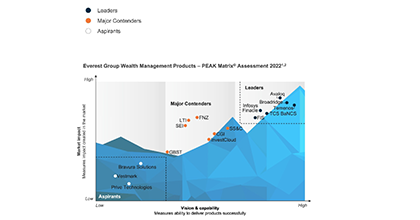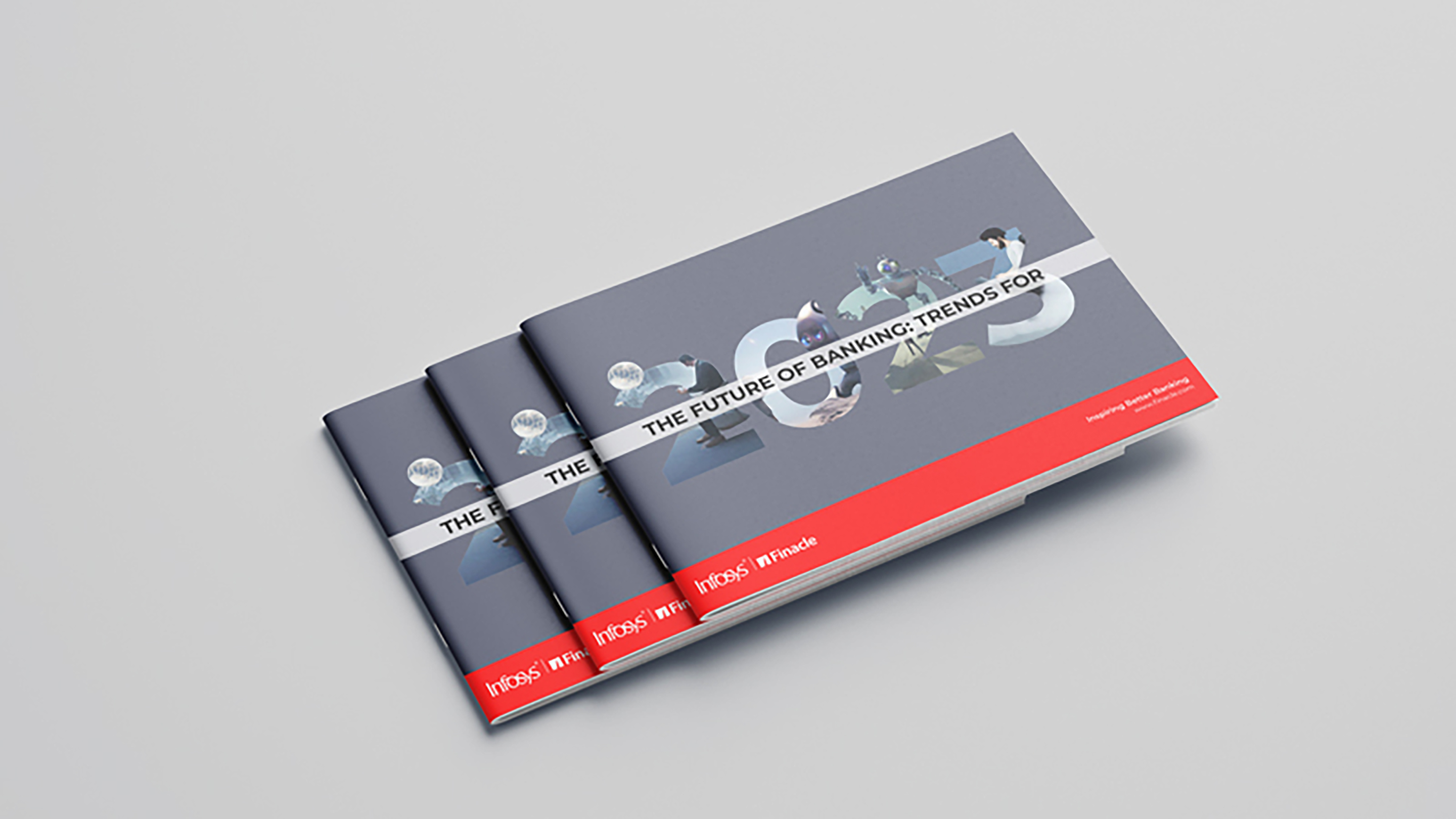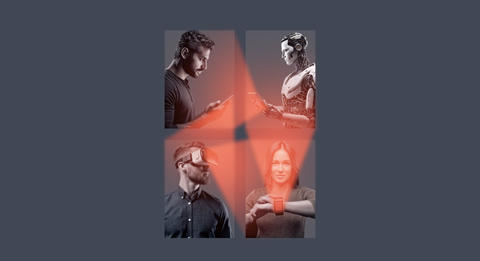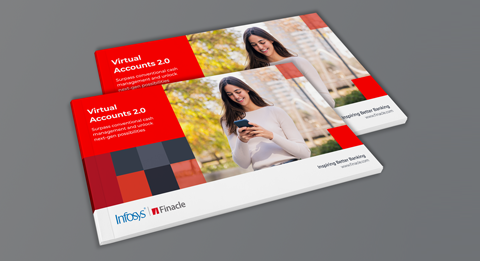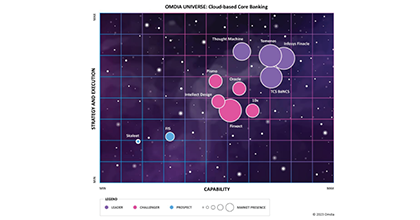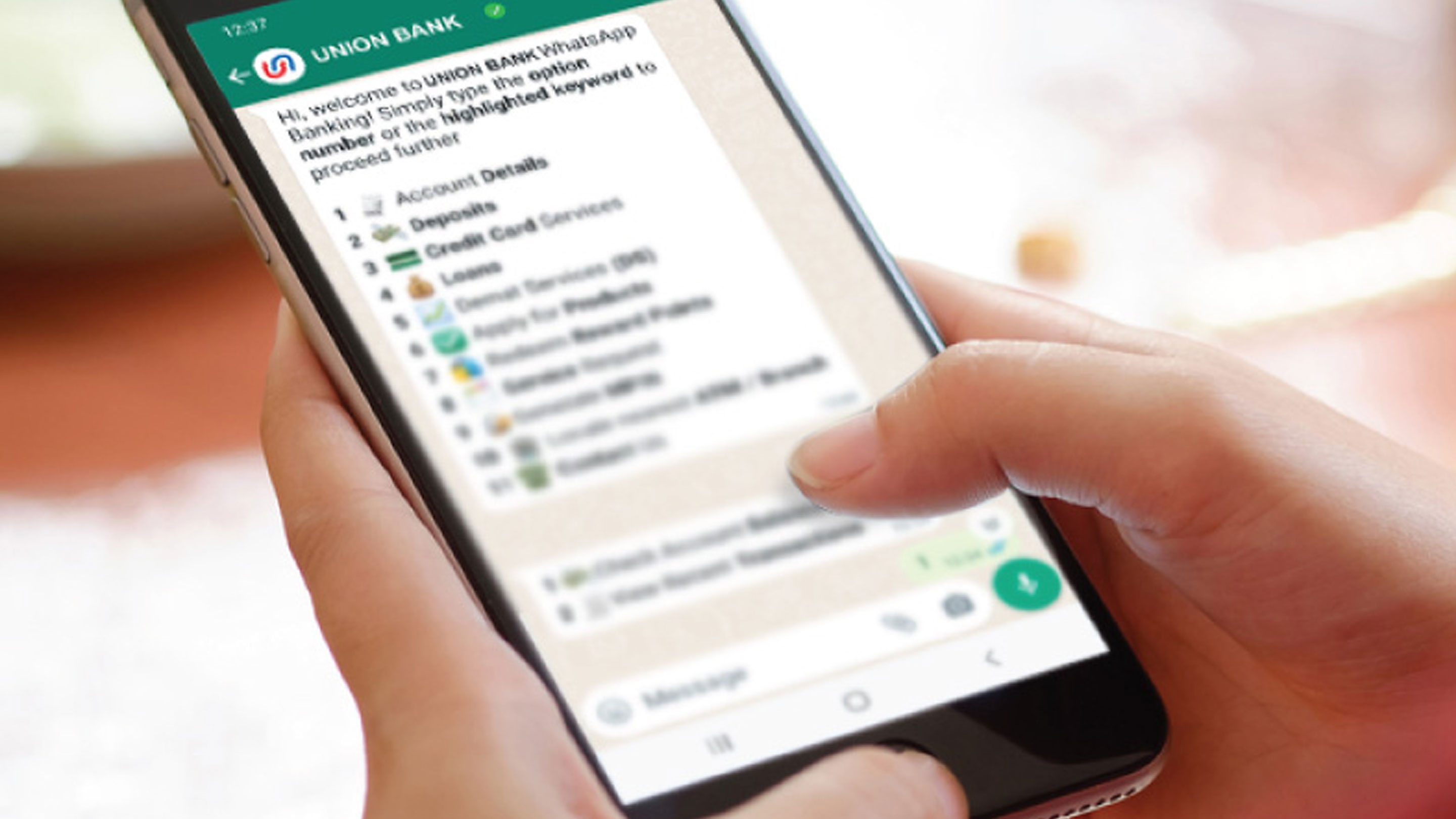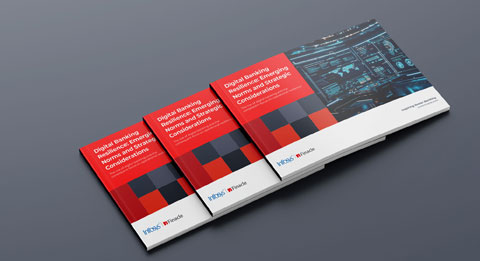-
![]() ESG in bankingESG-conscious banking should create new and future-proof value streams to build a sustainable and resilient business.Read More
ESG in bankingESG-conscious banking should create new and future-proof value streams to build a sustainable and resilient business.Read More -
![Everest Group PEAK Matri Everest Group PEAK Matri]() Everest Group PEAK MatrixA comprehensive solution delivering a full spectrum of wealth products as great experiences. It also improves the productivity of financial advisors and streamlRead More
Everest Group PEAK MatrixA comprehensive solution delivering a full spectrum of wealth products as great experiences. It also improves the productivity of financial advisors and streamlRead More -
![]() Subsidiary of an American Bank in IndonesiaFind out how a leading American bank adapts to a digitalized trade and supply chain finance operations as a part of its larger transformation by leveraging Finacle Trade Finance Solution Suite.Read More
Subsidiary of an American Bank in IndonesiaFind out how a leading American bank adapts to a digitalized trade and supply chain finance operations as a part of its larger transformation by leveraging Finacle Trade Finance Solution Suite.Read More
-
![]() Recomposing Banking: Leading the Digital ContinuumReport gives you a glimpse of the major areas where recomposing banking will create significant impact and value, Infosys Finacle has put together a report on..Read More
Recomposing Banking: Leading the Digital ContinuumReport gives you a glimpse of the major areas where recomposing banking will create significant impact and value, Infosys Finacle has put together a report on..Read More -
![]() Core Banking on Cloud: Navigating to the Fast LaneTake a deep dive into cloud-based core banking and explore the imperatives, opportunities and challenges, and the hallmarks of a robust solution.Read More
Core Banking on Cloud: Navigating to the Fast LaneTake a deep dive into cloud-based core banking and explore the imperatives, opportunities and challenges, and the hallmarks of a robust solution.Read More -
![]() Embracing Payments ComposabilityA step-by-step guide for maximizing Real Time Payment opportunities by embracing Payments Composability...Read More
Embracing Payments ComposabilityA step-by-step guide for maximizing Real Time Payment opportunities by embracing Payments Composability...Read More
-
![]() Shaping Banking’s Next: Banking Technology Trends for 2025 and BeyondThe banking industry has been balancing disruption and opportunity for several years now, and the pace of change shows no signs of slowing as we move into 2025 and beyond.Read More
Shaping Banking’s Next: Banking Technology Trends for 2025 and BeyondThe banking industry has been balancing disruption and opportunity for several years now, and the pace of change shows no signs of slowing as we move into 2025 and beyond.Read More -
![]() Virtual Accounts 2.0: Surpass Conventional Cash Management and Unlock Next-Gen PossibilitiesVirtual Account Management was a groundbreaking shift in the banking landscape, revolutionising use cases like cash concentration, pooling, centralised treasury management, and in-house banking (POBO, ROBO, COBO)Read More
Virtual Accounts 2.0: Surpass Conventional Cash Management and Unlock Next-Gen PossibilitiesVirtual Account Management was a groundbreaking shift in the banking landscape, revolutionising use cases like cash concentration, pooling, centralised treasury management, and in-house banking (POBO, ROBO, COBO)Read More -
![]() Unlocking Hybrid CloudAs banks push forward with their digital transformation agenda, cloud serves as a pivotal enabler. Each bank, at varying stages of adoption, crafts its unique path, dictated by context, regulations, and risk appetite.Read More
Unlocking Hybrid CloudAs banks push forward with their digital transformation agenda, cloud serves as a pivotal enabler. Each bank, at varying stages of adoption, crafts its unique path, dictated by context, regulations, and risk appetite.Read More
-
![]() Banking on CloudThis report from Infosys Finacle delves into the need for accelerating cloud adoption, highlights the current state of the industry, and puts forth key recommenRead More
Banking on CloudThis report from Infosys Finacle delves into the need for accelerating cloud adoption, highlights the current state of the industry, and puts forth key recommenRead More -
![]() Omdia Universe | Cloud-based Core BankingIn the report, Omdia highlights the following key capabilities of leading cloud-based core banking providers:Read more
Omdia Universe | Cloud-based Core BankingIn the report, Omdia highlights the following key capabilities of leading cloud-based core banking providers:Read more
-
![]() Emirates NBDEmirates NBD consolidates its operations on a single version for scalability, agility, and standardization.Read More
Emirates NBDEmirates NBD consolidates its operations on a single version for scalability, agility, and standardization.Read More -
![]() A Global Top 5 BankDiscover how a global top 5 bank headquartered in the US accelerated payments transformation.Read More
A Global Top 5 BankDiscover how a global top 5 bank headquartered in the US accelerated payments transformation.Read More -
![]() Union Bank of IndiaUnion Bank of India launches Union Virtual Connect (UVConn) by leveraging WhatsApp to provide customers personalized banking services.Read More
Union Bank of IndiaUnion Bank of India launches Union Virtual Connect (UVConn) by leveraging WhatsApp to provide customers personalized banking services.Read More

The Eight Key Criteria in Core Banking Selection
Blogs
Research for the Infosys Modernization Radar 2022 found that 88 percent of the systems in organizations were legacy, and more than half of those were core to the business. A huge majority of legacy systems were on course for modernization within five years.
This is true of banking as well. However, while many banks are keen on core transformation, they could become overwhelmed by its complexity. Despite making significant investments over a decade or so, only 16 percent of financial institutions agree that they have managed to transform at scale and obtain full value. Two reasons stand out: the rapid evolution of customers, competition and technology keeps moving the transformation goalpost forward; secondly, most modernizations are incomplete because in focusing on the front-office, they fail to address mid and back-office functionality such as service effectiveness or personalized product creation.
Hence it is critical for a bank to find the right solution and technology partner that can help it achieve the best outcomes from core modernization. Based on our experience, we believe the following eight criteria are key to making the right choice:
Functional richness: Composability is one of the biggest changes to have occurred in the modern core banking platform. But when choosing a composable solution, a bank should also ensure it covers all the banking verticals/ sub-verticals that it serves. For example, a corporate bank catering to the MSME, SME, mid-market and corporate segments, would need a solution that allows it to compose products and services for all of them. Other important solution requirements include depth of capability – for instance, support for syndicated, and not just basic lending – and a functional roadmap aligned with the bank’s own business expansion plans.
Technology prowess: Most banks will want a cloud-native solution. Given that different vendors interpret this differently, our recommendation is to go with a solution that follows the CNCF 12-factor cloud-native framework. In the age of open banking, every bank needs a core solution designed for open integration via APIs and webhooks. Also, the selected vendor must have plans for significant investments in emerging technologies, especially AI and edge computing, which will make a big impact on core systems design going forward.
Depth of services: It is well-known that people make the real difference in any transformation. Therefore, the technology partner’s team should have people with core transformation experience in the country, and platform, of implementation. Competence apart, the bank should ensure the vendor has adequate capacity to see the transformation through; this is because there will be many transforming banks competing for the same talent pool. At the time of choosing the solution/ vendor, the bank must insist on a team of certified professionals to work on its project.
Long-term viability: Even with a composable core, modernization is a long-term endeavor that will likely take several stages to complete. Banks need a partner who can go the distance, one with a long-term outlook and viability. This may be an issue with venture capital-funded providers, whose long time-to-value creation often exceeds their VC’s expectations. More than a billion dollars have been invested in core banking vendors in the last decade, but the collective revenues of a bunch of companies is less than a hundred million. Many of these businesses may not be able to sustain through a funding winter. Therefore, it is critical to check the prospective vendor’s growth and profitability trends, and long-term viability, before signing up.
Customer references: References from other banks – especially of a similar size and persona as the bank undergoing transformation – are very valuable in the selection decision. Also, because banking practices vary from country to country, a vendor with proven credentials in the market of choice, which has built the adapters to connect to its infrastructure, and has understood local requirements, has a clear advantage.
Operational performance: Rapid digital adoption is sending digital transactions soaring. And as open banking and finance penetrate further, there appears to be no limit to the growth. (For example, in India, real-time open payment transactions have crossed 8 billion per month). Core banking solutions need to be highly resilient to withstand this scale of transaction in general, plus the occasional spike on special days like Boxing Day 2022 in Australia which saw record-breaking sales.
Partner ecosystem: Not just scalable and resilient, a core banking platform also needs to be agile and extensible so a bank can add on differentiating capabilities that are not part of the vendor’s package. The existence of a rich partner ecosystem around the core is also an important consideration, because core banking is going the way of consumer platforms to become the “Operating System” of the banking applications landscape. The good news is that most providers have created an ecosystem of partners who build on top of their solutions. Last but not least, a bank should know about the vendor’s technology alignments: for example, is the vendor’s platform cloud-agnostic or tied to any particular provider?
Total cost of ownership: The last, and by no means least, criterion in core platform selection is the total cost of ownership. Core transformation is expensive, entailing a sizeable solution acquisition cost followed by ongoing expenses. However, a bank can optimize its cost by choosing a core solution that uses several open-source components in its stack, and offers economical maintenance, including preventive maintenance, options.
That being said, all contemporary core solutions offer a significant cost advantage versus legacy systems. And while core transformation is a serious investment, over the medium and long-term it delivers value that is several times its cost.
Finally
To make sure they extract every dollar of that value, banks should consider the above eight criteria, assigning different weightage to each, based on their contexts and needs. The right selection will make all the difference to their core transformation outcomes.
This article was previously published in Banking Day.
Rajashekara Maiya is responsible for charting Finacle’s product strategy and defining its product roadmap, strategic acquisitions, alliance partnerships, and client engagements. He represents the company while interacting with external stakeholders such as analysts and the media. He is also responsible for the business consulting practice at Finacle, Eco-system innovation Group along with Cloud, Blockchain business. He has played several roles across diverse areas, including product management, solution architecture, implementation, and pre-sales over the last 20 years at Infosys. Maiya has been instrumental in the conceptualization and planning of Finacle Enterprise – the latest addition to the Finacle portfolio designed to deliver simplified transformation and progressive modernization capabilities to global banks. Maiya specializes in core banking, risk management, regulations, and compliance. He has been quoted on these and other topics in reputed publications such as Forbes, The Banker, Banking Technology, The Economist, Business Line, BBC Radio, and the Economic Times. He is on the expert panel of the McKinsey Quarterly; is a member of the XBRL Abstract Modelling Task Force (AMTF) Group, MIT Technology Review Global Panel; and is an Associate member of the Institute of Chartered Accountants of India. Maiya holds several patents and has pending patents in the areas of partner portals, delivery channels, offline banking, and customer experience. Maiya is also a co-author of the book called ‘SMACing the Bank’.



©2025 -Edgeverve Systems Limited | All rights reserved

